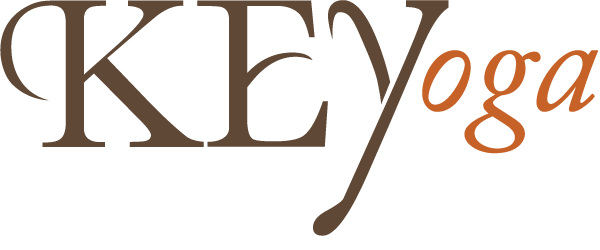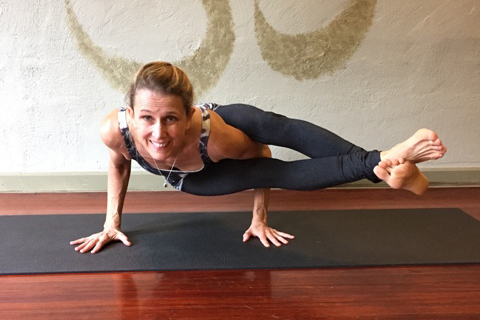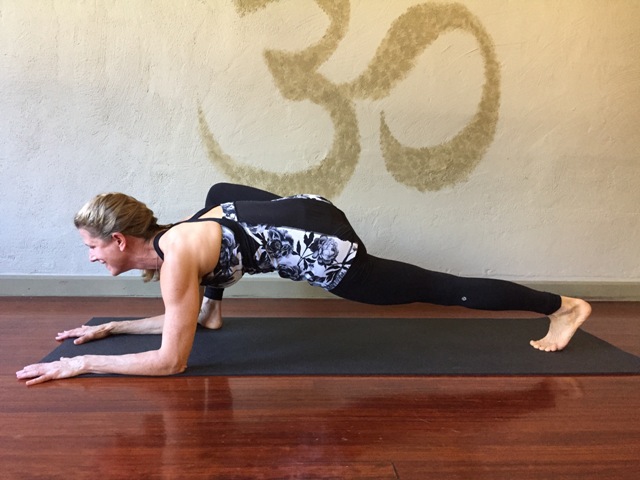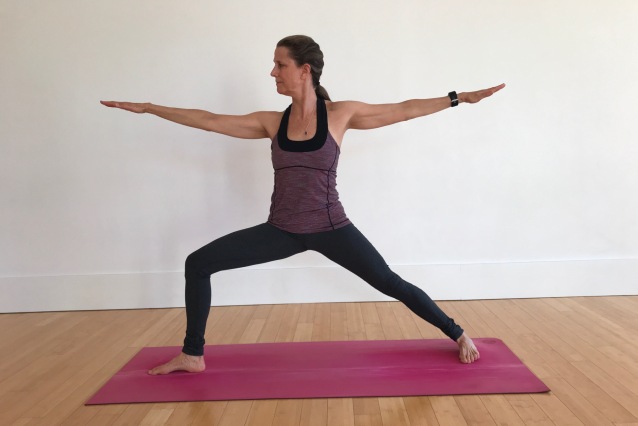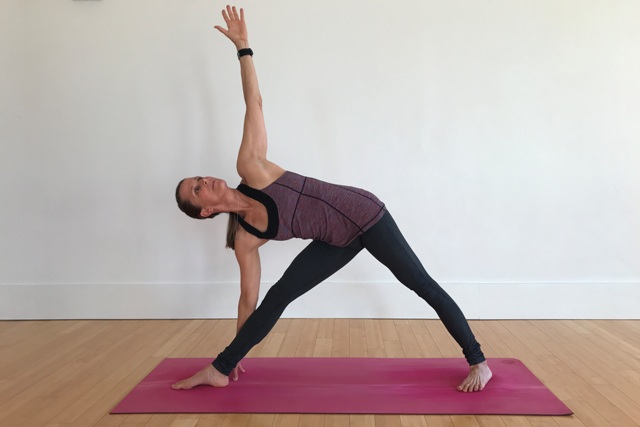In this chapter, William Broad dives into the risks of practicing yoga. He claims that most of the well-known yoga gurus tend to describe yoga as a nearly miraculous agent of renewal and they never admit to injuries. They don’t want to tarnish yoga’s image as a panacea to cure what ails you, even though as with any physical activity, there is always the risk of getting hurt. As more and more people are now doing yoga people with yoga related injuries are showing up in doctor’s offices and emergency rooms. This causes some doctors to see yoga as dangerous and caution against it while there are other doctors who have seen the benefits encourage their patients to do yoga. What to do?
What are the dangers of doing yoga? A survey published in 2009, taken from 1,300 yogis from around the world, reported the most frequent injuries in order of frequency: low back (231 reports), the shoulder (219 incidents), the knee (174) and the neck (110). Other specific accounts detailed herniated disks, fractured bones and heart problems. Four cases of stroke were reported.
These same injuries are common to beauty parlors, yoga and chiropractic. The incidence is rare, annually a person and a half out of every hundred thousand. What this means is that if twenty million people in the US do yoga and if yogis suffered the same injury rate as the general population then 300 people face the threat of stroke each year, or three thousand over a decade. Not high numbers, unless you are one of those people injured. There also could be a genetic disposition to things like osteoporosis, heart attack and stroke that perhaps look like yoga caused the injury when, in fact, the injury might have occurred while the person was doing a different activity.
There is a serious injury called a basilar arterial stroke that can happen when the neck is moved into ranges that exceed physiological tolerances. The neck can stretch backward 75 degrees, forward 40 degrees, sideways 45 degrees and can rotate on its axis 50 degrees. This type of injury can (and has) happened to a few people while doing yoga postures such as Cobra and Shoulder Stand. This is why I always teach Shoulder Stand on blankets, which prevents the neck from flexing too much. This is also why you are never to turn your head while in Shoulder Stand. But before yoga became popular this type of injury was called beauty parlor syndrome and happened mostly in the elderly when their head was tipped back while being shampooed.
Mr. Broad then looks at why yoga can be dangerous.
Teaching to many people in one class is challenging to say the least and can be hazardous as students try to fit into a one size fits all class plan. Originally, yoga was taught to one individual at a time. Each person has different issues and conditions that need to be addressed. These could range from tightness from a sedentary job, an old injury or accident (car accident, broken leg, ACL tear), specific postural issues (hunch back, knock knees, hyper mobility) or body proportions (long torso and short arms or vice versa).
One well known yoga teacher, Glenn Black, is quoted as saying that most students injure themselves because they are totally unprepared for the rigors of yoga. He goes on to say that “99% of students have underlying physical weaknesses and problems that make serious injury all but inevitable.” Instead of doing yoga, “they need to be doing a specific range of motion exercises for joint articulation and organ condition. “Yoga in general is for people in good physical condition. Or, it can be used therapeutically. It’s controversial to say, but it really shouldn’t be used for a general class. There’s such a variety and range of possibilities. Everybody has a different problem.”
Another issue is inexperienced teachers. I lead a teacher training program that starts in September and goes until May. We meet approximately 2 weekends a month for a total of 200 hours, which has become an industry minimum standard. I often get calls from potential students who are disappointed that the program takes so long. They want to be up and teaching sooner. As William Broad points out in his book: a 200 hour program is the equivalent of 5 forty-hour weeks. He asks, “would you study with a violin teacher who had trained for a month? A sculptor? A basketball player?”
Most teacher training programs are like mine, but there are immersion programs that prepare you to teach yoga in 30 days. Or, if you are a personal trainer, you can take a weekend workshop for CEU’s to learn how to teach yoga. Personally, I have 3 of these 200 hour training programs under my belt, but I have also done and continue to be in an Iyengar training program. This is one of the most rigorous training programs in yoga and takes years. At the end of every stage you have to demonstrate your teaching skills to an assessment group. A lot of students fail and have to retake the exams. It is serious, exacting and precise. But, Iyengar teachers are some of the most knowledgeable and experienced.
There is also ego and competition in public classes. People tend to push themselves more in public than they do in private. Students are sometimes resistant to using a prop or backing off in class because they don’t want to be seen as incompetent or weak. I think it takes and advanced practitioner to know when they need to back off and use a prop. Internationally known yoga teacher Seane Corn once said that most of her students are not as advanced as they think they are. Often, what students see as important in a posture is not what is really important. For example: in Down Dog most students try to get their heels to the floor, so they shorten their stance and round their backs, not knowing that the shape and extension of the spine are the most important features of the pose. Pushing the heels to the floor can contribute to low back issues. Raising the heels can be therapeutic for low back problems.
Ego also comes into play for teachers, as well, as we feel we have to demonstrate every pose perfectly. I once tore a hamstring demonstrating Triangle Pose to a class. I felt so open and flexible that I pushed it further than I usually did and felt a sickening pop at the hamstring attachment at my sit bone. That was embarrassing and humbling and I learned to never do that again! This is primarily why I don’t practice with my classes. Practicing yoga is very much a right-brain activity and teaching is primarily a left-brain activity. I don’t feel that I can be in my body and feel when I am teaching. Plus, I feel that if I am doing my own practice that I am not “teaching”, I am simply playing “Simon Says”.
Then there is the importance of warming up and never showing off. Mr. Broad describes an incident where a yoga teacher was being filmed for national television and tore her hamstring while lifting her leg into Hand-to-Big-Toe pose. Ouch! But, doesn’t the show have to go on?
Last year we were practicing One-Armed Handstand, which one of my students loved. One day while working, she felt she needed a break and decided to pop into the pose. She felt a pop in her elbow followed by some crunching noises. I’m not sure exactly what she injured as she didn’t go to the doctor and decided to let it heal by itself which, fortunately, it did. However, will that lead to arthritic problems in that joint in the future? I asked her “Where, in the 90-minute class, did we get to One-Armed Handstand? She admitted that it was about 30 to 40 minutes into class. By then we had warmed up the hand, arms and shoulders and prepared the arms to take the body weight by doing Down Dog as well as other poses. We didn’t do the posture “cold”.
An article in Yoga Journal entitled “Proceed with Caution” (which I looked for but couldn't find) proclaimed Doctors had identified five risky poses: Headstand, Shoulder Stand, Plow, Side Angle and Triangle. Judith Hanson Lasater, physical therapist and president of the CYTA (California Yoga Teachers Association), says that most poses hold subtle menace. The inherent risks can become quite palpable because you may not have the necessary knowledge, flexibility, strength and subtle awareness to proceed safely. Which is why it is important to study with an experienced teacher, take you time and proceed with caution.
I'm not sure I agree with the article in Yoga Journal about five risky poses. I see Triangle as more risky than Side Angle Pose for sure, but I am surprised that Lotus is not listed. Perhaps that just points to the subjective side of what is considered risky. To someone with open hips, lotus is not a problem but to someone with tight hips it could be a pose that they should never attempt. What would you consider the 5 most dangerous yoga postures?
